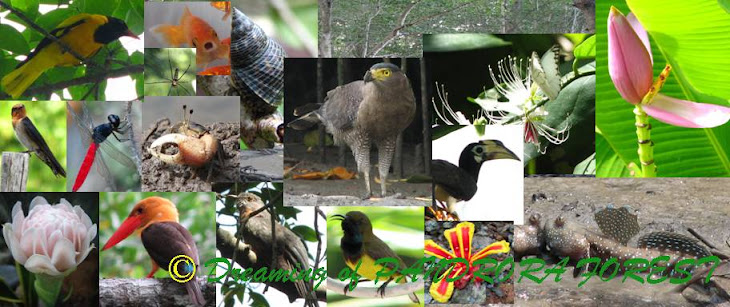It was on that evening on the road by the edge of a rainforest, I was trying my luck to look for the Asian Paradise Flycatcher (Terpsiphone paradisi) to photograph. Somehow, something caught my attention. It was just a small whitish leaf-like about two centimeters suspending in the air and it was moving a little. Oh well... just a leaf, probably. Or maybe it could be a spider??? Let's check it out.
As I got closer, I was very amazed to see this.
Click on for a closer look.
This is not the best shot... but can you see the strand of mucus?
What I was seeing for my first time was this snail climbing downwards by using its own mucus which looks like a thread made by a spider. As I was attempting to take a closer shot of this delicate creature, it somehow landed on my camera lens. And the strand of mucus stopped at about less than 1 meter above the ground. Gee... I think I "did" it again...sorry snail for ruining your journey. Anyway, I gave it a free ride down by placing it on the ground. I hope it is happy on that spot.
Hey JK of SiputKuning Journal, this post is specially for you! Also require your expertise to tell us more about this wonderful snail. Cheers, mate!
... Read full post ...
















